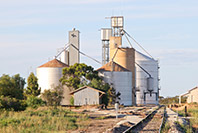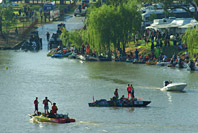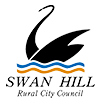The Story of Robinvale and Euston
1847 – January
John Grant occupied the Bumbang Peninsula and claimed it was the most southern station from Sydney.
1847 – May
John Grant was granted a pastoral lease from where Robinvale stands, southward for several miles and bounded by the Murray River on the north, east and west. It comprised 19,000 acres.
1851
Victoria was proclaimed a separate colony from New South Wales.
1853
William Randell on the paddle steamer ‘Mary Ann’ and Captain Francis Cadell in the ‘Lady Augusta’ each reached Euston from the mouth of the Murray. Each reported an established Government township with police station, hotel and several houses. They were able to obtain fresh vegetables.
Captain Cadell visited John Grant at his drop-log homestead at Bumbang Station where he received fresh vegetables and fruit.
From this time the river trade became established. Paddle steamers and their barges carried cargo and passengers up and down the river, as it was navigable approximately 8 months of the year.
1859
Tenders were called for the erection of the police building, quarters and stables at Bumbang Station. Bumbang Station had several successive owners.
1875 – April 26
H Miller, politician, was granted a Pre-emptive Right, i.e. The right to buy before others, the 640 acres (1 square mile) where Robinvale township now stands. Finally, Bumbang Station was owned by Creswick. At first the land was only for grazing. The paddle steamers vied with each other to load the first wool clip of the season.
Carringaton, who was Creswick’s overseer lived with his family in the Bumbang homestead. Of drop-log pine construction, it had loopholes for protective fire against enemies.
1907
H.E. Cuttle, with his third son Robin, took a buggy, a pair of horses, a week’s supply of food and water and a compass and set out for the Murray River. They cut their way through the Mallee and several days later arrived at Bumbang Peninsula. They found F. Luelf who was farming ‘The Cliffs’. (1½ miles downstream from Lock 15).
‘The Cliffs’ farm had not prospered and Leulf was happy to sell. H.E. Cuttle acquired an extra 6,300 acres and Robin, at 16 yeas of age became manager of ‘The Cliffs’.
1915
Robin, at 6ft 8in and 15 stone, was refused by the Australian Army, so he sailed to England hoping to enlist in the Royal Flying Corps. He was again rejected but was accepted by the Royal Field Artillery.
1916
Robin won the Military Cross. The Cuttle’s also planted 10 acres of naval oranges at ‘The Cliffs’. A very successful venture; the first citrus in the district.
1917
Robin transferred to the Royal Flying Corps as an observer gunner and was killed in air combat over France on May 8, 1918 at Caix near Villers-Bretonneux – 22 years old and 2½ years of active service.
While he was at war, the Cuttle’s continued to run ‘The Cliffs’, managing it from Ultima.
1919
Cuttles purchased from Creswick the 1 square mile of freehold of the old Pre-emptive Right of Bumbang Station. They share-farmed the area.
1922
The Victorian Government decided to extend the railway line to the Murray River. The Cuttles engaged R.A. Black to survey their proposed township.
1923
Herbert Cuttle was granted a water licence to irrigate 300 acres and became the first person authorised to divert water from the Murray River in this area. Melbourne Newspapers wrote of the new township-to-be in glowing terms.
1924
Official Opening of the Railway
June 13, the railway extension from Annuello to the Murray River was officially opened. A special train departed from Bendigo 8.50pm on June 12 and arrived at 12 noon June 13.
On board were many dignitaries. The Minister for Railways, Mr Eggleston, performed the opening ceremony. Mrs Margaret Anne Cuttle cut the blue ribbon. The original Euston-Robinvale Bridge was also constructed taking over the role of the punt.
1924 – October 23
The Land Sale – Robinvale Township
A special train from Bendigo arrived at Robinvale – the first time the area had been given a name. Margaret Anne Cuttle, using flowers and hessian, made the name for the railway station.
One the train were the auctioneer, George Pethard and solicitors to prepare and sign contracts of sale. Residential lots were ¼ or ½ acres. Shop sites in the centre of town had 33-foot frontages. Building sites wee set aside as gifts to the main religious denominations. There were brisk sales and of all lots.
1926
The construction of a railway and road traffic bridge across the Murray River at Robinvale was begun.
Source: © Mrs Jenny Black










